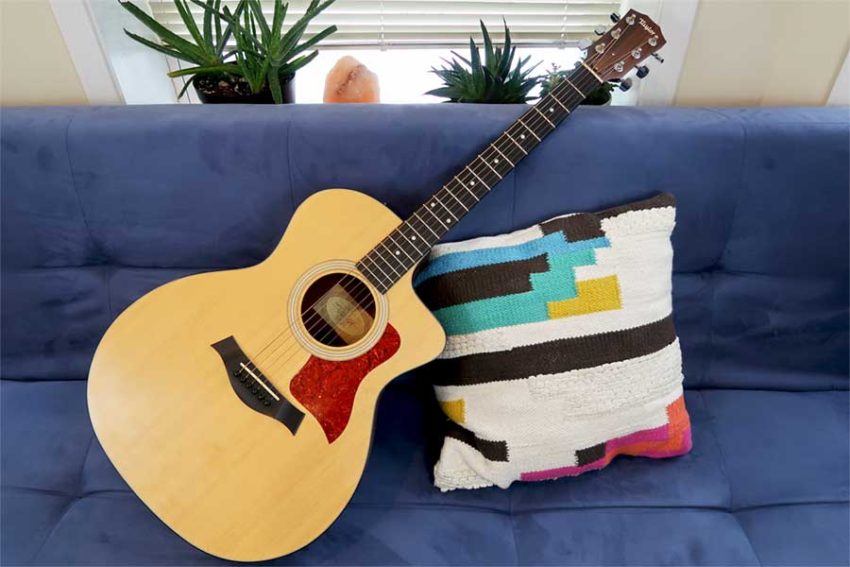In modern songwriting, the chorus is often king, supplanting the main ideas and melodies of a track in one easy-to-digest arrangement. When a big, presence-filled chorus is needed, layering additional full range instruments like an acoustic guitar is a great option. By learning the technique of properly mixing and tracking an acoustic guitar for the sole reason of bolstering a song’s presence, the producer can cement a solid foundation for their next big track.
Optimal Acoustic Tone Starts at Tracking
The acoustic guitar has great advantages and flexibility in tone due to the many ways it can be recorded in studio, and today, utilizing an acoustic-electric’s piezo pickup or transducer can also bring a “controlled” direct signal into the mix for reference and your mixing pleasure. But when a great mic locker is available, it’s hard to argue with the great tone a well mic’d acoustic guitar can provide.
There are plenty of options for miking an acoustic, starting with a mic directly over the 12th fret. This method brings out higher frequency tone and all the great “fretting sound,” making it seem like you’re sitting right next to the guitarist. In mixing, anything below 70Hz can typically be removed with this method if that is desired. If more bass frequencies are the goal, placing a mic closer to the soundhole will achieve this and mix with a “full-range” tone in mind. Think of the acoustic guitar’s soundhole as the cone of a speaker and how moving a mic around a speaker affects the tone captured by the mic. Along with having more low-range presence, this technique will also bring all punchy mid-range frequencies to the forefront. Besides these two popular techniques, engineers and producers have had luck with “room miking” and stereo miking acoustic guitars. These are both great options as well, but for simplicity’s sake, sticking with a mono signal that can be doubled and panned always seems to fit better sonically (though that is completely subjective.)
Writing an Acoustic Accompaniment
This may be the most subjective part of this entire technique, as there is no rule book when it comes to composing the acoustic parts to fit in sonically with your mainly electric song. But to attempt to keep the song on track and put the best foot forward, think about what is most important when writing and tracking your song. If you have leads that need to shine through, track acoustics that will support this in the mix. Track with low-end in mind, as your acoustic arrangement will be acting as a rhythm track for your lead. Another popular way is to “double” the already existing electric rhythm track with full chords, optimizing open strings and even trying different tuning methods to achieve this. This method can bring a chorus to the next level, or make a bridge sound separate from the rest of the track.
Listening To The Track
After tracking, panning and some light mixing is done, it’s important to sit and listen to the entire track and pinpoint anything that sticks out in negative ways. This could be many things, from a loud fretting sound spiking your levels during a verse, to the low rumble of the acoustic resonant frequencies muddying a chorus. Fixing these is often as simple as adjusting levels and EQ.
As can be heard in comparing the full track to the track without acoustic mixed in, you lose a presence in the overall song when subtracting the acoustic tracks. This is because of the full-ranged nature of acoustic guitar and how it was recorded. Isolating the stereo acoustic tracks and mixing them together first also provides a great foundation of sound that only needs to have gain adjusted to sound great in the overall mix.
Mixing an acoustic guitar into your already electric arrangements is a high-level technique that producers and other musicians alike will be praising in a great sounding mix. It is important to always keep in mind the subjective nature of composing and sound in general, but with this technique in one’s repertoire, presence missing from a song will never be a problem that cannot be solved.



